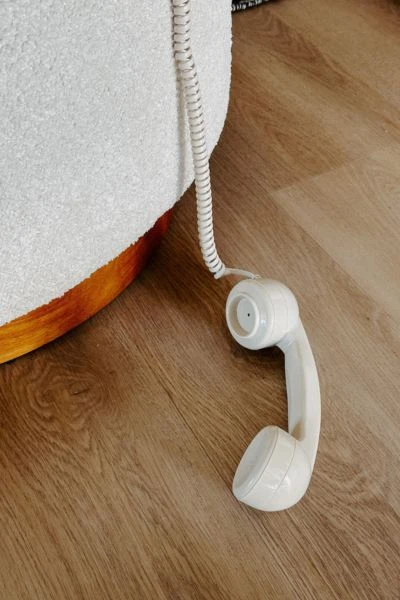Let’s cut to the chase: if you’re blogging but haven’t created a lead magnet yet, you’re missing out on one of the most powerful ways to grow your email list. You know, the kind of list that isn’t controlled by an algorithm and helps you build a relationship with your audience or potential customers.
But not all lead magnets are created equal.
If you want to build a lead magnet that actually converts (as in, turns your casual blog readers into email subscribers and loyal fans), you need more than a pretty PDF. You need strategy, clarity, and a deep understanding of your audience’s “I need this right now” moment.
In this post, we’re walking through how to build a lead magnet that does exactly that.

What Is a Lead Magnet (And Why Should You Care)?
A lead magnet is a free resource you offer in exchange for your reader’s email address. It’s the gateway into your world—the first “yes” someone says to you. Think of it as a digital handshake: helpful, valuable, and designed to build trust.
The goal isn’t just to give something away for free.
It’s to give the right thing—something so good, your reader thinks: “Wow, if this is free, I can’t imagine what their paid stuff is like.”
Step 1: Know Your Audience’s Burning Problem
Before you create a great lead magnet, get crystal clear on what your ideal audience actually wants. Your lead magnet should answer one question: What’s a quick win they’re craving right now?
Ask yourself:
- What’s the biggest roadblock they’re hitting?
- What would help them get results in 10 minutes or less?
- What could save them time, money, or frustration?
If you’re a Pinterest coach, maybe it’s a “Pin Title Swipe File.”
If you’re a blogger for beginners, it could be a “Blog Setup Checklist.”
The key? Make it specific and solution-focused.
Step 2: Choose the Right Format
Not every lead magnet has to be a 27-page ebook. In fact, short and actionable usually convert better. Here are a few high-converting types of lead magnets:
- Cheat Sheet or Checklist (quick to consume and easy to reference)
- Mini Email Course (educational and builds trust over a few days)
- Swipe File or Template (makes a task easier or faster)
- Resource Library (great for multi-offers or content creators)
- Quiz (interactive and personal)
- Free Challenge (great for community-building and engagement)
Choose the format that fits your audience’s lifestyle and your content delivery style that’ll boost your conversion rates to your sales funnel…
Step 3: Design It With Simplicity in Mind
Your lead magnet doesn’t have to be fancy. What it does need is clarity, value, and zero fluff.
Tips for an effective lead magnet:
- Use Canva or a simple Google Doc with clear headings
- Make it skimmable—use bullets, bold text, and white space
- Add a personal touch with your tone or a quick intro
- Include a next step, like a CTA to follow you, read a blog post, or join your waitlist
This isn’t about perfection. It’s about making it easy for your subscriber to get the win you promised.
Step 4: Create a Landing Page That Converts
Your landing page should sell the transformation, not the download.
Instead of saying,
“Download this free checklist,” says something like, “Start your blog the right way—with the exact checklist I used to launch my site in a weekend.”
✔️ Use a clear headline
✔️ Highlight the benefit or result
✔️ Add a visual of the lead magnet
✔️ Keep the opt-in form simple (name + email is enough)
And don’t forget to connect it to your email marketing platform (like Flodesk—my fave for beginners) to deliver your lead magnet.

Step 5: Promote It Everywhere (Strategically)
Don’t build your lead magnet and expect people to find it on their own—share it like you mean it!
Here’s where to promote it:
- In a notification bar or pop-up on your blog
- At the end of every blog post (especially relevant ones)
- On your Pinterest pins and idea pins
- In your Instagram bio and stories
- On your thank you pages or tripwire offers
- In your email signature!
Pro tip: Create a few pin designs just for your lead magnet and schedule them weekly on Pinterest to build momentum over time.
Step 6: Nurture Your New Subscribers
Getting the email is only the beginning—what happens next is what turns subscribers into superfans and generates more leads.
Send a short, 3-5 email welcome sequence that:
- Delivers the lead magnet immediately
- Introduces you + your mission
- Offers a few valuable resources (blog posts, freebies, etc.)
- Encourages them to reply or connect
- Teases what kind of content to expect next
This is where you build trust, and that’s what turns clicks into conversions later on.
Final Thoughts: It’s Not About Free, It’s About Value
Creating a high-converting lead magnet isn’t about giving something away just to grow a list. It’s about starting a real relationship with your audience, built on value, trust, and “OMG this helped me so much!” energy.
When you do it right, your lead magnet doesn’t just collect emails—it builds momentum.
So, whether you’ve been blogging for 3 weeks or 3 years, now’s the perfect time to create a lead magnet that feels aligned, helpful, and irresistible.











0 Comments